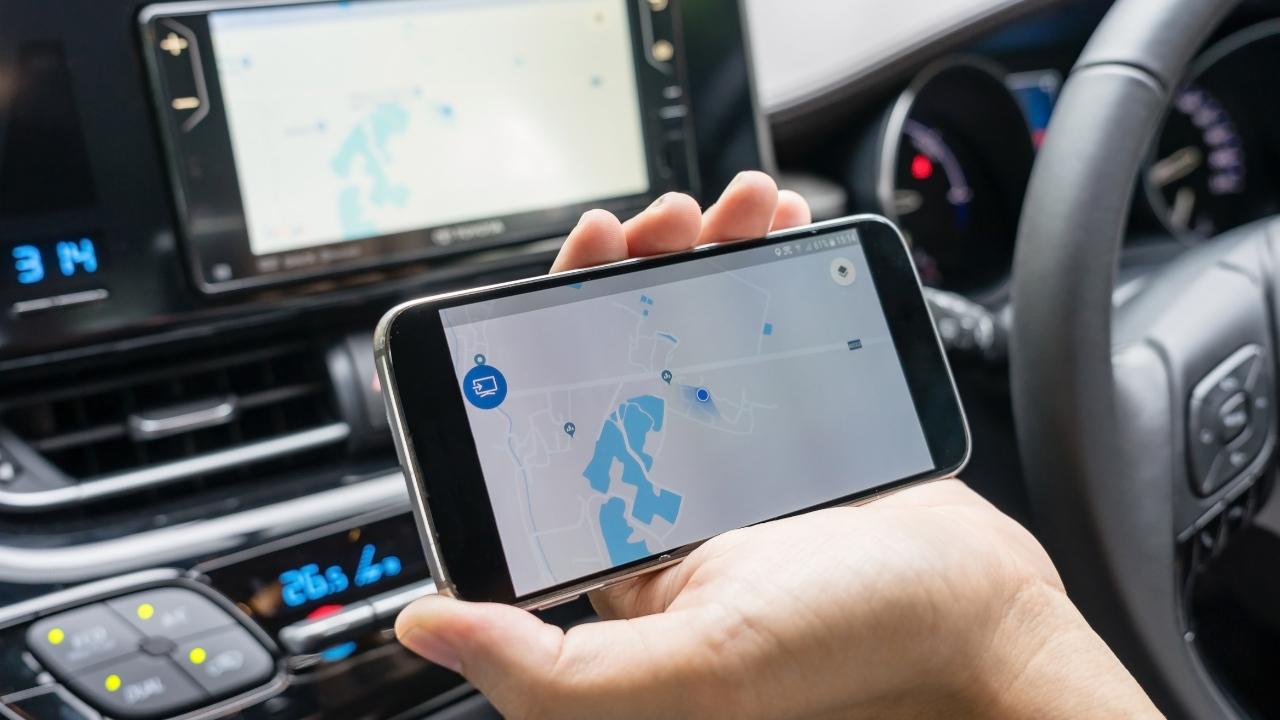The Benefits of Using a GPS Tracker for Your Bike's Security

Bike theft has become a prevalent issue in cities worldwide, and the rise in stolen bicycles is a significant concern for cyclists. Whether it's for commuting, recreation, or sports, losing a bike can be a devastating experience. Traditional security measures like locks may not always be enough to prevent theft, and bikes are often stolen in broad daylight from public spaces.
In response to this growing problem, GPS trackers have emerged as a powerful solution for bike security. These devices allow cyclists to monitor their bikes in real time, offering a way to prevent theft and recover stolen bikes quickly. This article explores the benefits of using a GPS tracker for your bike's security, highlighting how it can protect your investment and provide peace of mind.
Understanding GPS Trackers for Bikes
Explanation of How GPS Technology Works
GPS (Global Positioning System) technology enables devices to determine their exact location by communicating with satellites orbiting the Earth. A GPS tracker for your bike uses this technology to provide real-time data on the bike’s location, which can be accessed through a mobile app or web platform. By constantly monitoring your bike’s whereabouts, you can stay informed and take action if your bike moves without your consent.
Types of GPS Trackers Available for Bicycles
Several types of GPS trackers are designed specifically for bikes, offering a range of features to suit different needs:
-
Wired GPS Trackers: These are hardwired into the bike’s system, offering a permanent installation option. They tend to be more secure, as they are harder to remove or tamper with.
-
Battery-Powered GPS Trackers: These devices are portable and easy to install, making them ideal for cyclists who use multiple bikes or need flexibility. They usually have rechargeable batteries and may require periodic charging or replacement.
-
Smart Locks with GPS Tracking: These combine the functionality of a traditional lock with GPS tracking, providing an additional layer of security. They are ideal for cyclists who prefer a lock that offers more than just a locking mechanism.
Discussion on the Versatility and Affordability of GPS Tracking Devices for Everyday Cyclists
The availability of affordable and versatile GPS tracking devices has made them a popular choice for everyday cyclists. Modern GPS trackers are compact, easy to install, and designed to fit seamlessly onto most bikes. Additionally, gps tracker device price in Bangladesh has become more accessible, making it easier for cyclists to implement this security solution without breaking the bank.
Benefits of Using a GPS Tracker for Bike Theft Prevention
Real-Time Location Tracking for Immediate Response
The most significant benefit of using a GPS tracker for bike security is real-time location tracking. If your bike is stolen, you can immediately check its location using a smartphone app or web platform. This gives you the ability to track its movement and potentially recover it before it’s too far away. Real-time tracking allows for a fast response, minimizing the time between the theft and recovery.
Notification and Alert Systems When Suspicious Activity is Detected
Many GPS trackers come with alert systems that notify you if suspicious activity is detected. For example, if the bike moves without your authorization, the tracker sends an immediate alert to your phone. This allows you to respond quickly by contacting the authorities or monitoring your bike’s location in real-time.
Dissuading Potential Thieves Through Visible Tracking Devices or Stickers
GPS trackers often come with visible stickers or decals indicating that the bike is being monitored. This serves as a deterrent to thieves, as they are less likely to target a bike if they know it’s being tracked. Just the presence of these stickers can significantly reduce the chances of theft, as thieves tend to target unprotected bikes.
Enhancing Recovery Prospects with GPS Tracking
Case Studies: Success Stories of Bike Recovery Due to GPS Tracking
There are numerous success stories where GPS trackers have helped cyclists recover stolen bikes. In one case, a cyclist in Dhaka was able to recover his bike within a few hours after it was stolen. Using the GPS tracker’s real-time data, the cyclist pinpointed the bike’s location and worked with local law enforcement to retrieve it. These success stories highlight how effective GPS tracking can be in recovering stolen bikes.
The Role of GPS Data in Assisting Law Enforcement
When a bike is stolen, the GPS tracker provides valuable information that can assist law enforcement in locating and recovering the bike. The tracker’s real-time updates allow police to quickly trace the bike’s location and take action, increasing the chances of a successful recovery. By providing precise coordinates, GPS tracking makes it easier for authorities to track down stolen bikes and apprehend thieves.
Community Sharing and Local Networks to Bolster Recovery Efforts
Some GPS trackers offer community-sharing features, where cyclists can share their bike’s location with local networks. If a bike is stolen, this community of cyclists can help monitor areas or share information to aid in the recovery. This collaborative effort strengthens the chances of locating the stolen bike, as local cyclists can keep an eye out for it and assist in its recovery.
Installing and Configuring a GPS Tracker
Step-by-Step Guide to Installing a GPS Tracker on Your Bike
-
Choose the Right GPS Tracker: Select a GPS tracker that suits your needs, whether it’s a wired or battery-powered model. Consider features like battery life, tracking accuracy, and app integration.
-
Locate a Discreet Installation Spot: Place the GPS tracker in a hidden location on the bike to make it harder for thieves to find. Popular spots include under the seat, inside the handlebars, or within the bike frame.
-
Secure the Tracker: Use adhesive or mounting hardware to secure the tracker firmly. Ensure it’s securely attached but not easily visible or accessible.
-
Activate the Tracker: Follow the manufacturer's instructions to activate the tracker, pair it with the app, and set up your account.
Tips for Optimal Tracker Placement
-
Ensure the tracker is placed in a location that is discreet but still easily accessible for maintenance.
-
Avoid placing the tracker in areas exposed to excessive moisture or heat, as it could affect the tracker’s performance.
Guidance on Configuring Settings for Maximum Effectiveness
When configuring your GPS tracker, enable features such as geo-fencing (to get alerts when the bike moves outside a designated area) and set up notifications for unauthorized movement. Regularly check the tracker’s battery level to ensure it’s functioning properly.
Assessing the Effectiveness of GPS Trackers
Analyzing Data and Feedback from GPS Tracker Users
Many bike owners have found GPS trackers to be highly effective in preventing theft and aiding recovery. User feedback often highlights the reliability of real-time tracking, the ease of installation, and the peace of mind it provides. Cyclists report that having a GPS tracker increases their sense of security, knowing they can track their bike if stolen.
Limitations and Challenges Faced in Real-World Application
While GPS trackers are highly effective, they are not without limitations. Poor GPS signal strength in certain areas (e.g., underground parking or densely populated urban areas) may affect the tracker’s accuracy. Additionally, battery-operated trackers need to be recharged periodically, and trackers can be vulnerable if the thief discovers and removes them.
Future Advancements and Innovations Expected in GPS Technology for Bikes
The future of GPS tracking technology for bikes looks promising. We can expect advancements such as longer battery life, more accurate tracking, and improved resistance to tampering. Integration with IoT and smart technology will also make GPS trackers more intuitive and user-friendly, providing even more security for cyclists.
Conclusion
In conclusion, a GPS tracker is an invaluable tool for bike security. With real-time location tracking, theft alerts, and community recovery networks, a GPS tracker significantly enhances your bike’s security. By implementing this technology, cyclists can have greater peace of mind, knowing that they have an effective solution to prevent theft and increase recovery chances.
- Vibnix Blog
- Politics
- News
- Liberia News
- Entertainment
- Technology
- Onderwijs
- Art
- Causes
- Crafts
- Dance
- Drinks
- Film
- Fitness
- Food
- Spellen
- Gardening
- Health
- Home
- Literature
- Music
- Networking
- Other
- Party
- Religion
- Shopping
- Sports
- Theater
- Wellness


